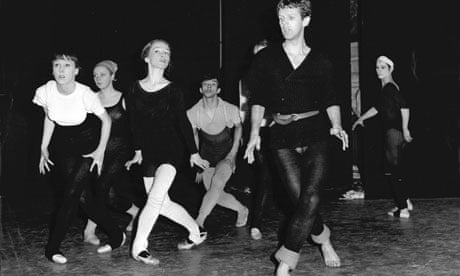The choreographer and director Rudi van Dantzig, who has died of cancer aged 78, played a major role in the development of classical ballet in the Netherlands. He also had a second career, which developed later in his life, as a novelist and biographer. As a choreographer, Van Dantzig made more than 50 works, most of them on contemporary themes, although he also produced well-received versions of standard classics such as Romeo and Juliet and Swan Lake.
Many of his ballets contain a strong thread of social criticism; he was not afraid to explore difficult subjects. The vividly theatrical Monument for a Dead Boy (1965) told the story of a boy who discovers his hitherto repressed homosexuality and is ultimately destroyed by his own desires. This ballet brought Van Dantzig international notice and was mounted for several major companies. Among the interpreters of the leading role, originally created by Van Dantzig's partner, the dancer and designer Toer van Schayk, was Rudolf Nureyev.
Painted Birds (1971) was an early alert to man's ability to pollute both minds and the environment, and made extensive use of film projections to illustrate and amplify the action on stage. Its final coup de théâtre came when the music by Niccolò Castiglioni gave way to a recording of the final chorale from Bach's St Matthew Passion, which was taken up by the cast, the choreographer and some of the company's staff.
He could be light-hearted too. His ballet Ulysses – made for Nureyev, a lifelong friend – had the hero slouching around in pyjamas and dressing gown trying to avoid Penelope's vigourous vacuum cleaning. His Last Songs to Richard Strauss's song cycle was musical, restrained and moving.
Born in Amsterdam to strongly leftwing parents, Van Dantzig was six when Germany invaded the Netherlands, and grew up under the occupation. He was separated from his parents and sent to the countryside where conditions were safer. There, after the liberation, he encountered a Canadian soldier with whom he formed a relationship. This provided the inspiration for his prizewinning novel For a Lost Soldier, published in the Netherlands in 1986, and later filmed and translated into English.
Returning to school in Amsterdam, Van Dantzig proved a poor scholar, uninterested in most of his schoolwork. When he wandered into a cinema showing Michael Powell's The Red Shoes, his future path was decided. He took lessons with Anna Sybranda and then with Sonia Gaskell, a former Ballets Russes dancer who ran a school and a small classical company.
It was clear that because of his late start Van Dantzig would never make a first-rate dancer, but there was a shortage of talented men at that time, and he was tall, good-looking, highly intelligent and prepared to work ferociously hard. He was taken into the company and by 1955 had produced his first choreography, Night Island.
The previous year, Martha Graham and her company had made a first visit to the Netherlands and the effect on Van Dantzig was cataclysmic, opening his eyes to new possibilities for drama and expressiveness in dance. He travelled to New York to study Graham's technique, which was to have a strong influence on his own choreography.
Van Dantzig was briefly involved in the foundation of Netherlands Dance Theatre, but when Gaskell retired in 1968 he took over as director of the Dutch National Ballet, initially sharing the role but taking sole responsibility in 1971 and remaining in the post for two decades. He had a talent for administration and showed a sure eye in importing and commissioning ballets that expanded the company's repertoire and developed its dancers.
He was in demand internationally, mounting works for Ballet Rambert, the Royal Ballet (a creation starring Nureyev) and the Paris Opera Ballet among others. In 1991 he left the Dutch National Ballet to concentrate on writing and mounting works for other companies. He wrote a memoir about Nureyev that was translated into English and a biography of the Dutch artist and resistance fighter Willem Arondeus.
He received the Benois de la Danse lifetime achievement award and was made knight and then officer of the Order of Orange-Nassau.
He is survived by Toer.
